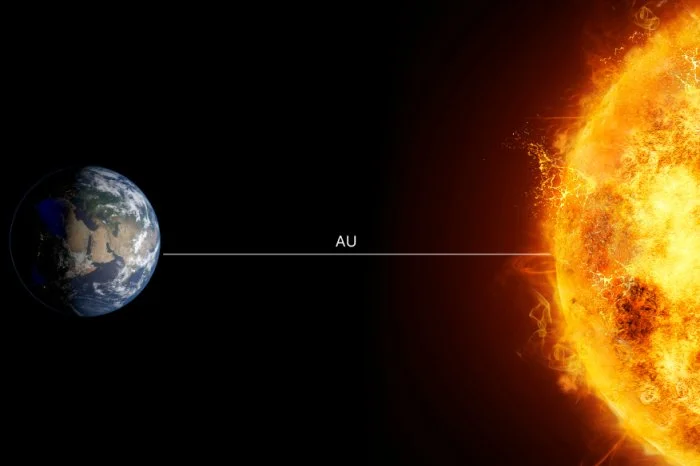What is an astronomical unit?
The units used in astronomy are various from those we use for earthly values. It is worth knowing them if astronomy is our passion, because we can then more easily understand professional articles and books, as well as visualize distances in the Solar System for ourselves. The astronomical unit of distance is a basic value that we are sure to encounter during our study of the cosmos, so we will take a closer look at it today. We will also examine what another astronomical unit is sometimes used in astronomy, as well as why a new unit appeared in astronomy.
Astronomical unit - definition, abbreviations
Astronomical Unit (AU) - an astronomical unit equal to 149,597,870,700 meters, which determines what is the average distance of the Earth from the Sun. It is a non-system unit, and its definition was adopted in 2012 in Beijing - at a meeting of the International Astronomical Union. To make converting astronomical units easier, an approximate value of 150 million km is adopted. The astronomical unit is used not only to determine distances in the Solar System, but also outside it - in other planetary systems and in binary systems, thus where there are comparable distances between objects.

Why the astronomical unit of distance is used
Distances in the Solar System and space in general are so vast that scientists found it necessary to introduce separate astronomical units. It makes calculations easier - 1 astronomical unit of distance in the Solar System is simply 1 au, rather than millions of kilometers, so you can see right away that it is much easier to put it into formulas, for example. Since the astronomical unit determines the average distance between Earth and the Sun, we can also more easily imagine and represent the distances occurring between other objects in the Solar System. The distance between the Earth and the Moon is now only 0.0023 au, the distance between the Earth and Mars is equal to 1.52 au, and the distance between the Earth and Pluto is as far as 39.5 au. It makes learning, telescope observations and understanding of the cosmos much easier.
Other astronomical units
The astronomical unit that determines distances in the Solar System is not the only one used by scientists. Surely each of us has once heard of the light year, which determines the speed at which light spreads in space. It is exactly 299,792,458 m/s, so in a second light travels a distance of about 300,000 km. If we recalculate how much it will be in the course of a whole year, we get the result of as much as 946,800,000,000 km - this is the astronomical unit of one light year (1 ly). According to this value, the distance of the Earth from the Sun is 8 light minutes, and the distance to the next star is equal to 4.22 light years.
Professional space scientists also use astronomical units such as parsec and redshift. These terms may no longer be familiar to amateur astronomers, but it is worth to keep in mind that such values are also used in space science. Parsec (pc) is also a unit of distance in the Solar System, defining the distance from which the radius of Earth's orbit is visible at an angle of one second of arc. In contrast, redshift determines the distance of objects by their spectrum. The spectrum of celestial bodies moving away from us is red, and approaching is blue. So the larger the redshift, the farther the object is from us - for the most distant bodies redshift = 10.
How is the astronomical unit of distance converted to other units?
The distances in the Solar System, expressed in astronomical units, can also be converted. Thus, one light year is equal to about 63 241 astronomical units. Whereas one parsec is equal to 3.2616 light years and 206265 astronomical units (1 pc = 3.2616 ly = 206265 AU). Knowledge of these values makes it possible to recalculate any distances in the Solar System, which is sometimes very useful when we want to find out how far away particular celestial bodies are from us.
Check out similar entries:



